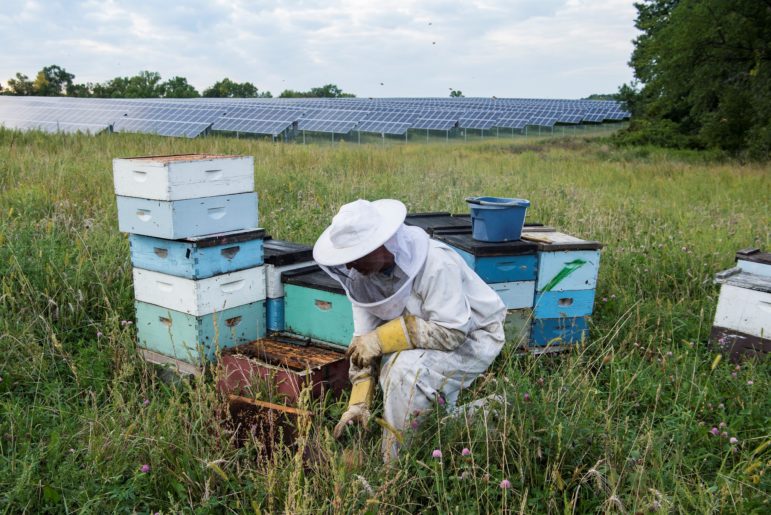
Have questions about solar farms and beekeeping?
The best practices compiled below were originally published with Fresh Energy input in the American Beekeeping Federation, Bee Culture, and the American Bee Journal. Bee Craft magazine, the leading beekeeping magazine of the United Kingdom, has also covered the growing trend. Make sure to subscribe and sign up for their monthly newsletters for all the beekeeping buzz.
Co-locating solar farms and honey bee apiaries was pioneered in England around 2010, then jumped the pond to Canada and New England, then to Minnesota and the Midwest and onward to the Pacific coast. Follow these best practices.
Ensure it’s a pollinator-friendly solar site
Ask the developer to provide a completed copy of your state’s pollinator-friendly solar scorecard or a scorecard from a state with similar climates and soils. When in doubt, contact us at the Center for Pollinators in Energy, davis@fresh-energy.org.
Have more than a handshake
Draw up an agreement with land owner or the solar company that includes the apiary location and your right to access, any planned movement of the hives as well as price and pre-payment arrangements for a portion or all the honey.
Offer professional packaging options
Many solar companies will love to have their name or the project name on a jar or other packaging option that they can share.
Location, location, location
Place and orient the hives to ensure bee droppings do not accumulate on the panels and bees do not interfere with regular operations and management.
Request to closely inspect nearby panels for droppings at least once per year.
Know the landscaper or ecologist
Exchange phone numbers with the vegetation management contacts.
Agree who will be managing the vegetation near the hives to be free of any invasive or noxious weeds.
Keep it separate
Extract and keep the honey from the pollinator-friendly solar farm separately from other honey.
Consumers strongly support solar energy and creating habitat to help save the bees. Honey from solar sites encourages the adoption of pollinator-friendly solar as a best practice.
Take precautions
Have liability insurance and provide a copy to the landowner and/ or solar company.
Install two or more swarm traps at 6’ off the ground nearby
Engage with the local media and community
Partner with clean energy non-profits and the solar company to educate more people about the importance of solar sites that provide healthy forage.
Take and share photographs and video of the site.
Tell a story with each shot by including the flowering vegetation, the bees or hives and the solar array.
Tag your social media posts with #BeesLoveSolar.
